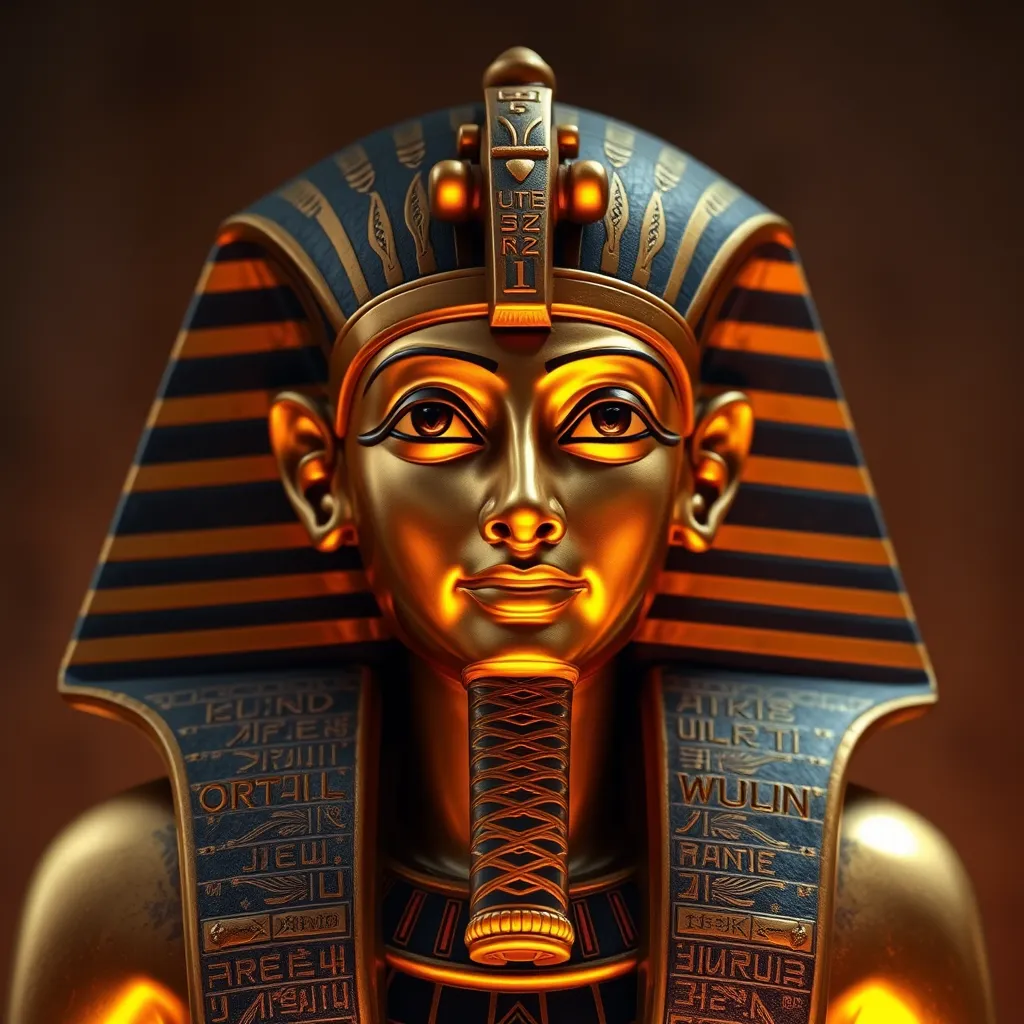The God of Wealth: The Myth of Ptah and His Role in Protecting the Pharaoh’s Wealth
I. Introduction
In the rich tapestry of ancient Egyptian mythology, Ptah emerges as a significant deity, revered not only as a god of craftsmanship but also as a protector of wealth. His influence extended deep into the realm of economics, particularly concerning the Pharaohs, whose reigns were often characterized by their accumulation and management of wealth. Understanding Ptah’s role gives us insight into the intricate relationship between divinity and governance in ancient Egypt.
II. Historical Context of Ptah
A. Origins and evolution of the worship of Ptah
Ptah’s origins can be traced back to the early dynastic period of ancient Egypt. Initially worshipped in the city of Memphis, Ptah’s significance grew as he became associated with creation and craftsmanship. His worship evolved from local cults to a more widespread reverence during the Old Kingdom, particularly as Memphis became a political and cultural hub.
B. Ptah’s association with Memphis and its importance as a capital
Memphis, the capital of ancient Egypt during the Old Kingdom, was pivotal in the worship of Ptah. The city was not only a center of political power but also a thriving economic hub. As the god of craftsmen and builders, Ptah was central to the construction of monumental architecture, including the pyramids that symbolized the Pharaoh’s wealth and divine authority.
III. Mythological Foundations of Ptah
A. Creation myths involving Ptah
In various creation myths, Ptah is depicted as a primordial being who brought the world into existence through the power of thought and speech. According to the Memphite Theology, Ptah created the universe by envisioning it in his heart and speaking it into being. This act of creation underscores his role as a god of artisans, embodying the idea that creation is an act of divine craftsmanship.
B. Symbolism of Ptah as a craftsman and creator god
Ptah’s identity as a craftsman is symbolized through various attributes. He is often depicted holding a staff and a sistrum, tools associated with construction and music, respectively. His craftsmanship is not limited to physical creations; it also encompasses the creation of order and stability within the cosmos, reflecting the Pharaoh’s role in maintaining Ma’at, or cosmic balance.
IV. Ptah’s Attributes and Symbols
A. Iconography of Ptah in art and sculpture
Ptah is frequently represented in ancient Egyptian art as a mummified figure dressed in a tight-fitting garment, with a broad collar and a skullcap. His skin is often depicted as green or blue, symbolizing fertility and rebirth. The imagery associated with Ptah highlights his connection to creation and his vital role in the prosperity of the land.
B. Representations of Ptah’s power over wealth and prosperity
- Ptah as the patron of artisans and builders, signifying his influence over material wealth.
- His association with the ankh, the symbol of life, underscoring the connection between wealth, prosperity, and vitality.
- Depictions of Ptah surrounded by symbols of abundance, such as grain and livestock, reinforcing his role in agricultural prosperity.
V. Ptah’s Role in Protecting Pharaoh’s Wealth
A. The relationship between Ptah and the Pharaoh
The Pharaoh, as the earthly embodiment of the divine, relied on Ptah for protection and guidance in matters of wealth. This relationship was reciprocal; while the Pharaoh sought Ptah’s blessings for wealth and prosperity, it was also his duty to uphold Ptah’s honor through monumental constructions and offerings.
B. Rituals and offerings made to Ptah for wealth protection
To secure Ptah’s favor, the Pharaoh and his subjects engaged in various rituals, including:
- Offerings of food, incense, and precious materials at temples dedicated to Ptah.
- Annual festivals celebrating Ptah, which included music, dance, and communal feasting.
- Prayers and inscriptions that invoked Ptah’s protection over the Pharaoh’s wealth and resources.
VI. Ptah in Egyptian Society and Economy
A. Influence of Ptah on artisans, builders, and craftsmen
Ptah was not only a deity of wealth but also a patron of artisans and craftsmen. His influence permeated through various trades, from stone masons to metalworkers. The craftsmen believed that their skills were a divine gift from Ptah, motivating them to create works of art and architecture that would honor him and the Pharaoh.
B. Economic implications of Ptah’s blessings on trade and agriculture
Ptah’s blessings were essential for the prosperity of trade and agriculture. The Nile’s annual flooding, which was crucial for farming, was seen as a sign of Ptah’s favor. Successful harvests and thriving trade were attributed to the deity’s watchful eye, cementing his role as a cornerstone of the Egyptian economy.
VII. Temples and Cult of Ptah
A. Major temples dedicated to Ptah and their significance
The most significant temple dedicated to Ptah was the Temple of Ptah in Memphis, which served as a religious center and a place of pilgrimage. This temple was not only a site for worship but also a hub for economic activity and governance, illustrating the intertwining of religion and state in ancient Egypt.
B. The role of priests and religious practices in honoring Ptah
The priests of Ptah played a crucial role in maintaining the cult and ensuring the deity’s favor. Their duties included:
- Performing daily rituals and offerings to appease Ptah.
- Overseeing the construction of statues and altars in his honor.
- Conducting festivals that celebrated Ptah’s power and influence over the economy.
VIII. Conclusion
In conclusion, Ptah stands as a vital figure in ancient Egyptian mythology, embodying the dual aspects of creation and wealth protection. His influence on the Pharaoh’s reign and the broader economic landscape of ancient Egypt cannot be overstated. The legacy of Ptah endures, reminding us of the enduring human quest for prosperity, protection, and the divine guidance that shapes our endeavors.




